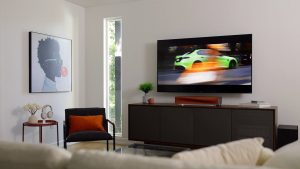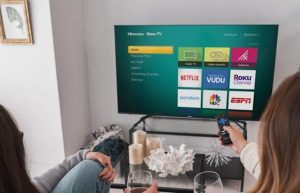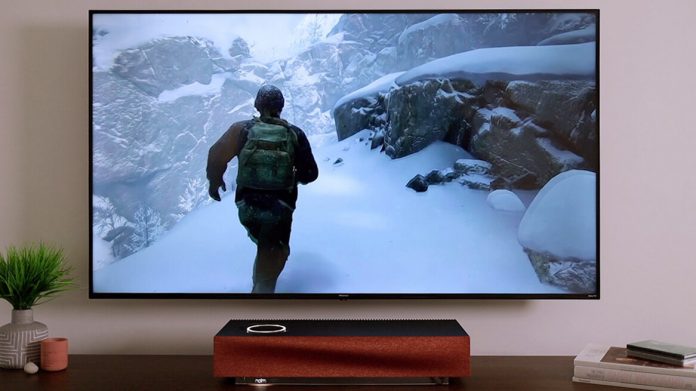Introduction
In the world of budget TVs, the Hisense R6 Series (often called the R6G or R6090G, depending on size and year) positions itself as a value-packed 4K Roku Smart TV for people who don’t want to spend a fortune. But cheap doesn’t always mean good—and the question is, does the R6 sacrifice too much to keep the price down?
This review cuts through the hype and marketing lingo to give you the real story. We cover features, picture quality, performance, smart TV functionality, and long-term value. Whether you’re shopping for a dorm room, spare bedroom, or budget-friendly main screen, we’ve got the answers.
⸻
Section 1: The Basics – What You’re Buying
The Hisense R6 Series comes in sizes ranging from 43” to 75”, with 4K resolution and Roku built-in. Key specs include:
• Display Type: LED
• Resolution: 3840 x 2160 (4K UHD)
• HDR Support: HDR10
• Smart Platform: Roku TV
• Refresh Rate: 60Hz native
• Ports: 3 HDMI (1 ARC), 1 USB, Ethernet, Optical audio out, RF, AV
Build-wise, the TV is simple. Plastic bezels, slim profile, VESA mount compatible. Nothing flashy—but it’s clean.
⸻
 Section 2: Setup and Interface
Section 2: Setup and Interface
Assembly and Mounting
Setup is quick—just screw in the legs (or mount it), plug it in, and connect to Wi-Fi. Roku setup is one of the easiest in the game. It walks you through activation and personalization in under 10 minutes.
Roku OS Experience
This is where the R6 shines. Roku’s interface is intuitive, fast, and ad-free on the home screen. You get access to virtually every major streaming platform—Netflix, Hulu, Disney+, YouTube, Apple TV, Prime Video—and hundreds of free apps.
Navigation is snappy, and even first-timers won’t get lost. The included Roku remote is basic but efficient.
⸻
 Section 3: Picture Quality
Section 3: Picture Quality
Clarity and Detail
At 4K resolution, images are sharp and detailed. For casual viewers and streaming content, it looks great. Native 4K content is crisp. Upscaled 1080p looks fine, though not as clean as pricier models with better upscaling tech.
Color and Contrast
Colors are decent but not rich. It supports HDR10, but brightness and color volume limit the HDR impact. Blacks are more gray than deep black. Contrast is average—fine for bright rooms, less so for dark movie nights.
No local dimming means shadow detail suffers in dark scenes.
Viewing Angles
This is a VA panel, which means narrow viewing angles. Sit off-center, and colors wash out. Fine for solo or direct-viewing, not ideal for wide seating setups.
 Gaming Performance
Gaming Performance
60Hz refresh rate and no variable refresh rate (VRR) means this isn’t a gamer’s dream. But input lag is around 11ms—very good for casual or even competitive console play. No motion blur issues, but you won’t get buttery-smooth action either.
⸻
Section 4: Sound Quality
TV audio is never a highlight in budget models, and the R6 is no exception.
• Volume: Loud enough for small to medium rooms
• Clarity: Voices are clear, but bass is almost non-existent
• Immersion: Lacks depth and punch
For casual viewing it’s fine. For movies or gaming, a cheap soundbar will make a huge difference.
⸻
Section 5: Design and Build
• Bezel: Thin, modern look
• Stand: Wide leg placement—check your table size
• Ports: Side and back accessible
• Weight: Light for its size
Nothing premium, but functional and minimal. It blends into most living spaces.
⸻
Section 6: User Reviews and Feedback
User reviews are generally positive. Here’s what shows up consistently:
What People Like:
• “Easy to set up and use”
• “Great value for the price”
• “4K and Roku together is a win”
• “Solid picture for a budget TV”
Complaints:
• “Weak sound”
• “Mediocre HDR performance”
• “Limited brightness”
• “Viewing angles not great”
Still, average ratings hover around 4.4/5, which says a lot about value satisfaction.
⸻
Section 7: Comparisons
Hisense R6 vs TCL 4-Series
• Both offer 4K Roku and similar panels.
• TCL tends to have slightly better contrast and build.
• Hisense is often a bit cheaper, but it’s close.
Hisense R6 vs Vizio V-Series
• Vizio has better contrast and supports both HDR10 and Dolby Vision.
• Hisense wins on interface—Roku is better than Vizio’s SmartCast.
Hisense R6 vs Fire TV Editions
• Fire TV has Alexa integration.
• Roku is more stable and has fewer ads.
• Pick based on your smart ecosystem.
⸻
Section 8: Pros and Cons
Pros:
• Affordable 4K with Roku
• Good upscaling and clarity
• Low input lag for gaming
• Smooth, intuitive interface
• Lightweight, easy setup
Cons:
• Limited HDR impact
• Weak sound system
• Narrow viewing angles
• Basic 60Hz refresh rate
• No local dimming or advanced gaming features
⸻
Section 9: Who It’s For
Best for:
• Students or budget shoppers
• Secondary TVs (bedrooms, guest rooms)
• Streaming-focused users
• Casual gamers
Not for:
• Home theater enthusiasts
• Hardcore gamers needing VRR or 120Hz
• Large family rooms with wide seating
⸻
 Section 10: Long-Term Performance
Section 10: Long-Term Performance
Over time, users report the Hisense R6 holds up well—as long as you don’t expect premium performance. Roku updates keep things running smoothly. The panel doesn’t degrade quickly, but don’t expect OLED-like sharpness or color retention over years.
As always: avoid burn-in by not leaving static images paused, and power cycle occasionally for software stability.
⸻
Conclusion: Final Verdict
The Hisense R6 Series is what a budget TV should be: functional, reliable, and better than expected for the price. It’s not cutting-edge. It’s not a stunner. But for around $250–$400 (depending on size), it offers excellent bang for your buck.
If you want a 4K Roku Smart TV that handles Netflix, YouTube, casual gaming, and doesn’t break the bank, the R6 is a smart pick.
Final Score: 8/10
⸻
Where to Buy
• Amazon – Regular discounts
• Best Buy – Often bundles with warranties
• Walmart – Frequent rollbacks on pricing
• Target – Good for returns
Look out for deals, especially during Black Friday or spring sales.

